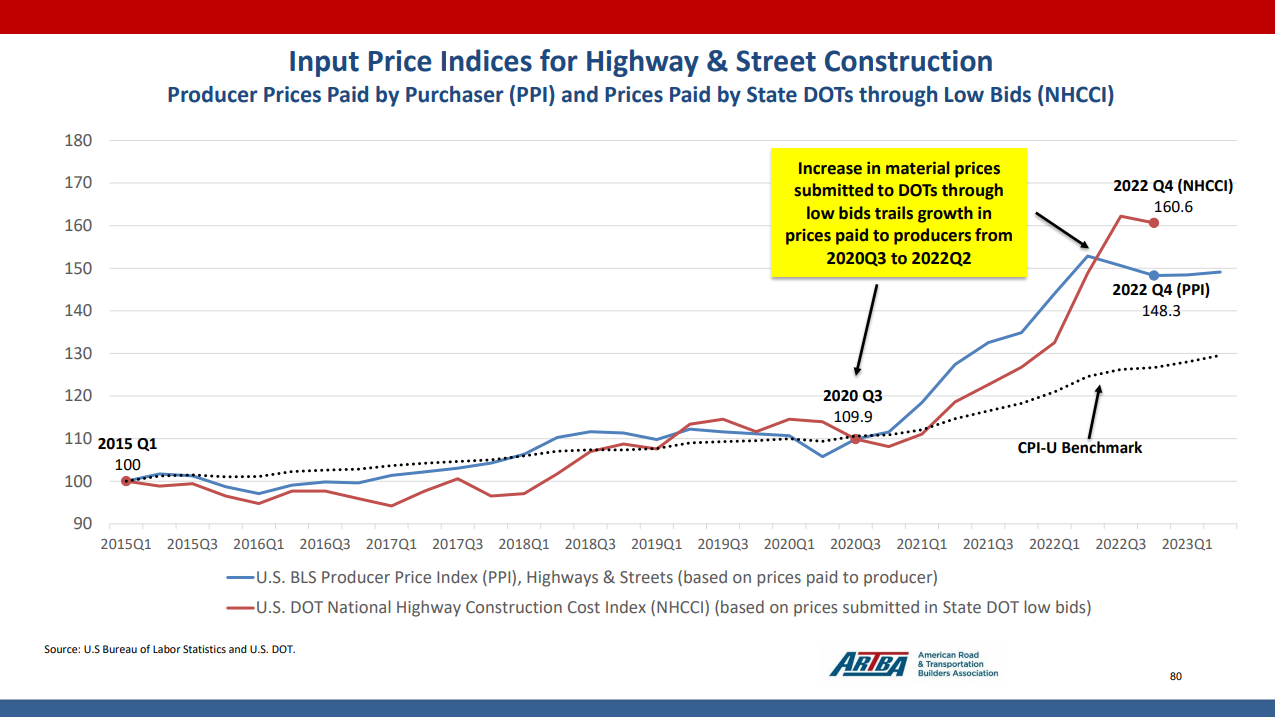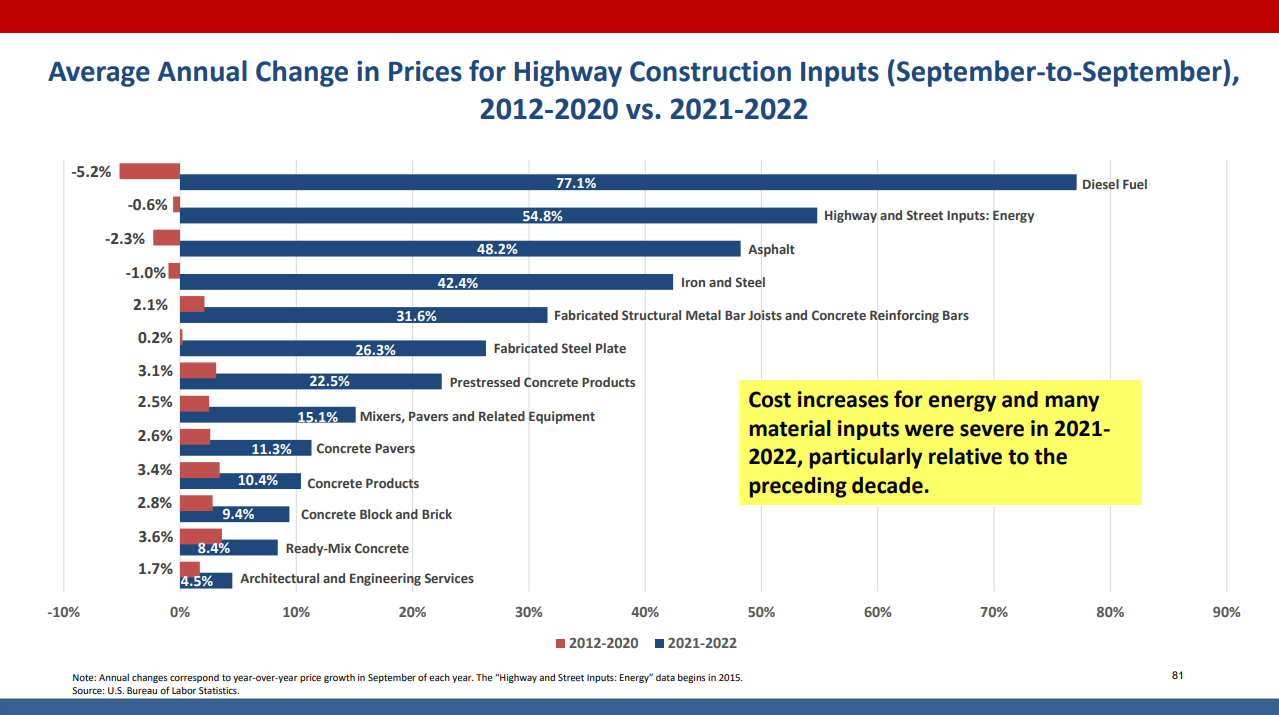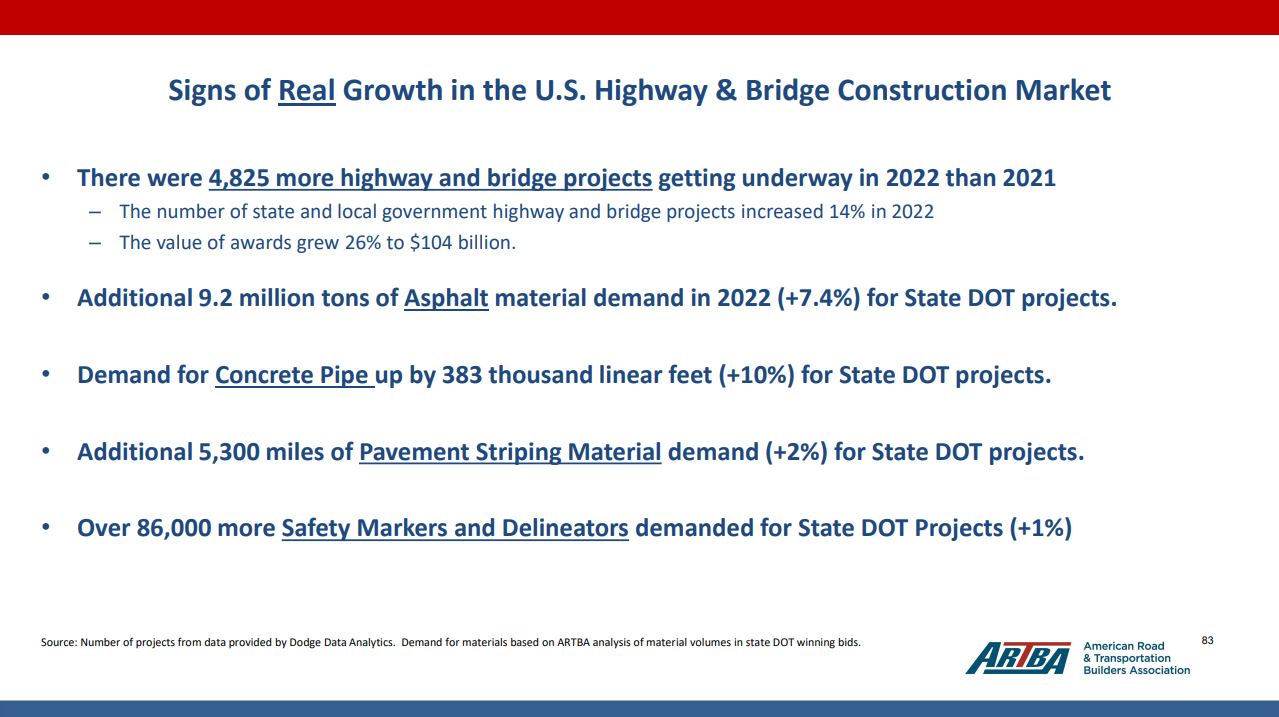By Adam Pagnucco.
In Part Two, we looked at problems with transportation revenues. Today we will look at costs.
The Maryland Department of Transportation (MDOT) and the Maryland Transportation Authority (MDTA) are both facing cost increases according to a presentation to the state’s Commission on Transportation Revenue and Infrastructure Needs (TRAIN Commission), MDOT’s comments on its capital budget and MDTA’s FY22 annual comprehensive financial report. Here are a few of them.
Highway and street construction costs
The slide below from the American Road and Transportation Builders Association shows two indices of highway and street construction costs from 2015 Q1 through 2023 Q1 along with the CPI-U. Note how both highway and street construction cost indices have grown much faster than overall inflation since the pandemic.

The slides below break down the cost increases by input. Diesel fuel, energy, asphalt, metal and concrete costs have all been challenging.


An important contributor to these cost increases is rising demand. The slide below shows recent growth in highway and bridge projects across the country. This may be related to the 2021 federal Infrastructure Investment and Jobs Act, which amped up transportation spending.

Partially as a result of the above, MDOT cited two cost factors as being problematic for its budget:
- Construction costs, which have increased 76 percent since 2013, more than twice the rate of inflation.
- MDOT’s operating budget has increased by 50 percent since 2013, largely due to the impacts of wage growth and contractual increases.
Toll road costs
MDTA, which administers the state’s toll facilities, has also experienced cost increases. In its FY22 annual comprehensive financial report, MDTA said, “Operations and maintenance costs increased by $27.0 million, or 19.6%, mostly due to an increase in E-ZPass vendor services costs and bad debt expense associated with uncollectable tolls.” The chart below shows operating expenses from FY13 through FY22.

And so both MDOT and MDTA, the two principal state transportation agencies, have been suffering from stagnant or declining revenues and substantial cost increases. Some of these problems predated the pandemic but the pandemic definitely exacerbated them. We shall see what the effect of these problems has been in Part Four.
